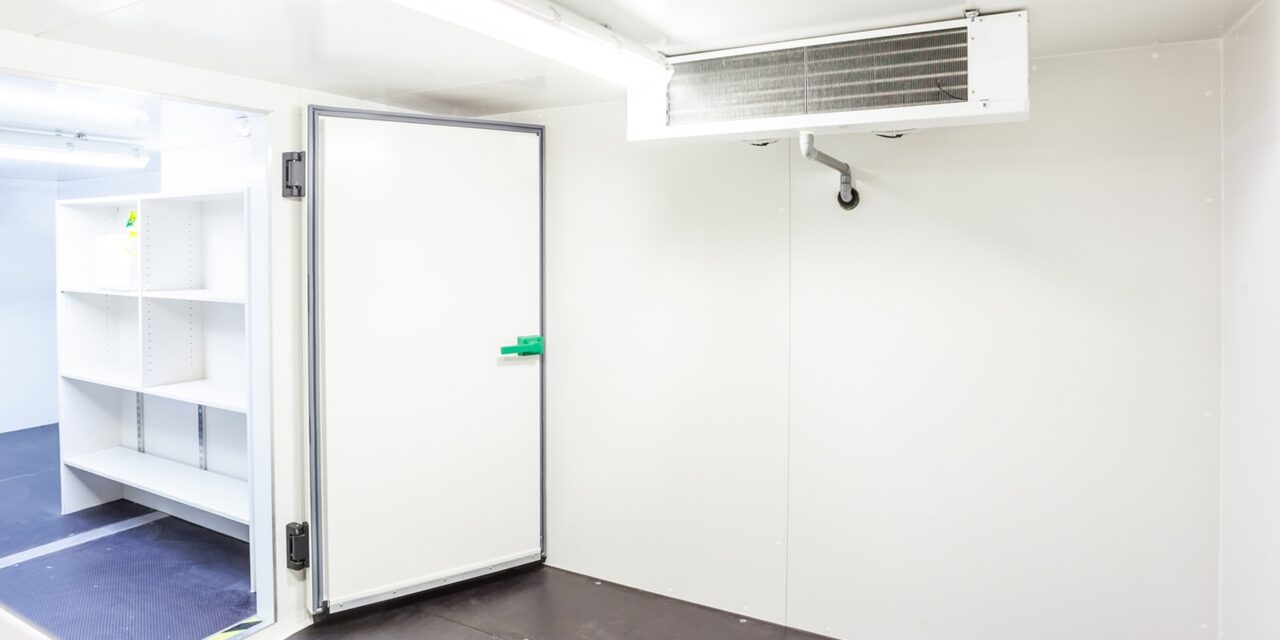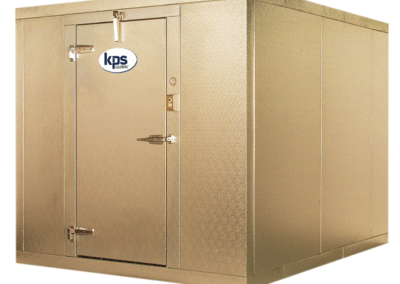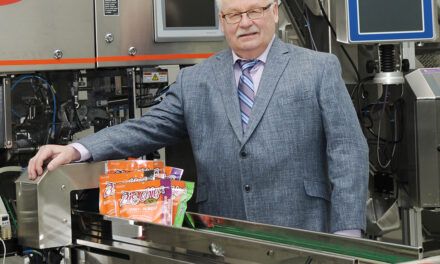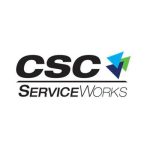
NEW WALK-IN PANEL-FRAME SYSTEM SIGNIFICANTLY LOWERS C-STORE ENERGY COSTS

NEW WALK-IN PANEL-FRAME SYSTEM SIGNIFICANTLY LOWERS C-STORE ENERGY COSTS
by James Costanza

The extent to which the convenience store industry has become embedded in Canadian culture was confirmed on Aug. 30, 2017. That’s the day that the country, which was marking its sesquicentennial, celebrated its first National C-Store Day. According to the Canadian Convenience Stores Association (CCSA), the national recognition “was an opportunity to help raise the profile of c-stores” by “reinforcing the critical role that…convenience stores in Canada play in growing the communities they serve.”
The numbers certainly merited that recognition. According to the CCSA’s 2017 Annual Facts & Figures Report, there were 27,239 c-stores in Canada at the end of 2016, a 2.8 per cent increase over the 26,486 that were in operation at the end of 2015. These sites employed more than 234,000 people and produced more than $56 billion in annual sales revenues.
While 65 per cent, or 17,689, were defined as being independently operated – meaning they were overseen by retailers that controlled the site’s operations, including determining and tracking inventory, even though their gas offering may be branded – these were not just one-off mom-and-pop shops. In fact, 60 per cent of Canada’s c-store sites have more than 800 square feet of retail space, with one-in-five having a footprint of more than 1,800 square feet.
So, it goes to figure: larger c-stores, larger product offering, larger inventory, larger storage requirements, larger on-site walk-in coolers and freezers – and larger electric bills.
When The Bill Comes Due
Controlling utility costs is a front-of-mind concern for c-store retailers because electricity charges are a large part of a site’s monthly budget. Because these costs can be volatile, the site operator must perform the delicate balancing act of deploying equipment that is energy-efficient while it can also reliably provide the necessary cooling and freezing capabilities.
Walk-in coolers and freezers must perform two crucial tasks: withstand the daily abuse to which they are susceptible, and be constructed in a way that they are resistant to the intrusion of exterior heat and humidity. These intruders result in condensation formation that will negatively affect the walk-in’s thermal and operational lifespan. A cooler or freezer that works harder to maintain predetermined temperature and humidity levels will gobble up energy at a prohibitively high rate of electricity consumption while being more susceptible to breakdowns that require costly maintenance or even replacement.
According to the website electricchoice.com, the average cost of a kWh of electricity in the United States (with rates in Canada generally in line with those in the U.S.) was 13.19 cents as of March 2019. This is a cost that can add up rapidly if inefficient or ill-performing walk-in coolers and freezers require excessive amounts of electricity.
Therefore, it would behoove budget-conscious Canadian c-store operators to identify and incorporate walk-in cooler and freezer technology that is able to withstand the efficiency-robbing assault of exterior temperatures and humidity.
To The Rescue
Fortunately for those retailers attempting to find a walk-in panel system that combines structural strength with optimized heat and humidity resistance, KPS Global, Inc., Fort Worth, TX, USA, has created the FUSIONFRAME panel-frame system for walk-in coolers and freezers. This new panel-frame system has been designed to offer optimal thermal-envelope performance that results in lower energy usage and utility costs, while performing comparably to traditional wood-frame panels in span tests.
This new panel-frame system design combines the proven structural strength of wood framing with the thermal performance of polyurethane insulation. The system features a foam-frame component with a structural element embedded in it, resulting in a framing system that increases walk-in unit R-values to a level that significantly slows the rate of heat/humidity flow and condensation formation, while limiting issues affecting life-cycle performance.
The key to the improved performance of this new panel-frame system is a method of construction that injects a polyurethane foam insulation jacket around the structural member. The polyurethane is injected with a blowing agent that can form a rigid plastic, but only three per cent of the material in the foam insulation is a solid. The other 97 per cent consists of millions of miniscule air bubbles that have the blowing-agent gas inside them. These air bubbles are better able to resist the flow of heat through them when compared to wood.
Additionally, the density of the polyurethane foam is only five pounds per cubic foot (lbs/ft3). By comparison, wood framing weighs between 27 and 30 lbs/ft3, making it up to 15 times denser than the polyurethane foam, and the principle of thermodynamics tells us that heat can flow more easily through denser materials. The result is that using polyurethane foam gives this new panel-frame system an R-value of R5.9 per inch of thickness, while the typical R-value of wood is R1.2 per inch of thickness, making it around five times more resistant to heat flow than wood.
There are four main benefits for operators who outfit their walk-in coolers and freezers with FUSIONFRAME:
- Energy Savings. A high volume of heat that flows into the walk-in unit forces the refrigeration system to work harder to remove it. If less heat is flowing into the unit, there is less that needs to be removed, meaning the refrigeration system doesn’t work as hard. This requires less electricity to power the system, lowering utility costs.
- More Airtight Construction. When two pieces of wood are joined together there will be a temperature difference at the joint. It is in this area, where the temperature is lower, that the heat will conduct at a greater rate. This new panel-frame system uses a tongue-and-groove connection that fits together more snugly at the joints than wood. This allows the frame components to seal themselves through a locking action that restricts moisture vapor from entering into the center of the panel joint.
- Warmer Joint Surfaces. With less heat transmitting through the new frame, the outside surface of the joint stays warmer, thereby significantly reducing the possibility of condensation formation in high-humidity environments.
- Energy-Efficiency Standards. The U.S. Department of Energy (DOE) has created an energy-efficiency standard for the insulation used in constructing the walk-in unit’s walls and ceiling, which is also a good guideline for Canadian c-store operators. The minimum R-value for the freezer wall and ceiling insulation must be R32. However, walk-ins built with wood-only frames will allow a level of heat conductance that can reduce the overall R-value to as low as R21. Operators can get an assist in maintaining – or improving – the R32 R-value threshold by using this new panel-frame system in their walk-in units.
The c-store market has established itself as a critical one in the Canadian economy, but only those sites that are able to control their utility costs can truly optimize the bottom-line performance of their operations. This new panel-frame system provides c-store operators a revolutionary new way to keep energy consumption and costs down, while still maintaining the structural integrity of traditional wood panel-frame systems.
James Costanza is a technical fellow for KPS Global, Inc., Fort Worth, TX, USA, and can be reached at james.costanza@kpsglobal.com. For more information, visit fusionframe.com.




































